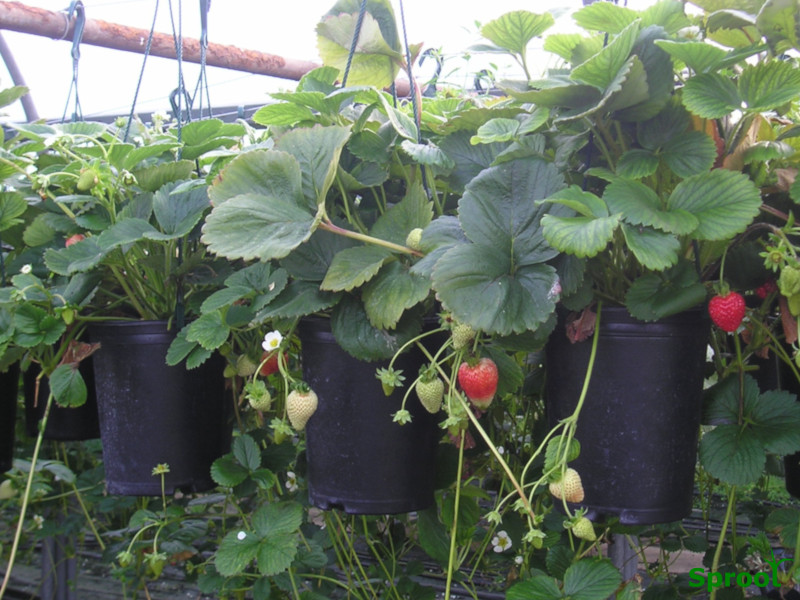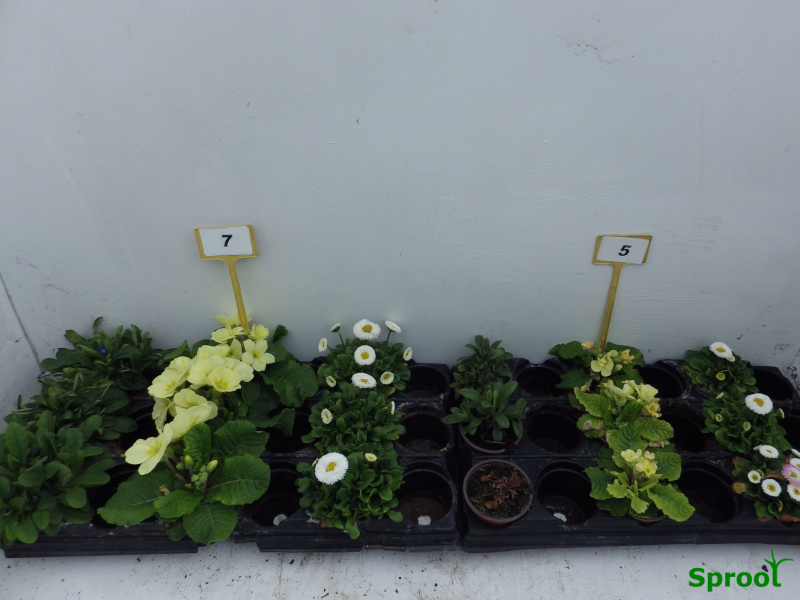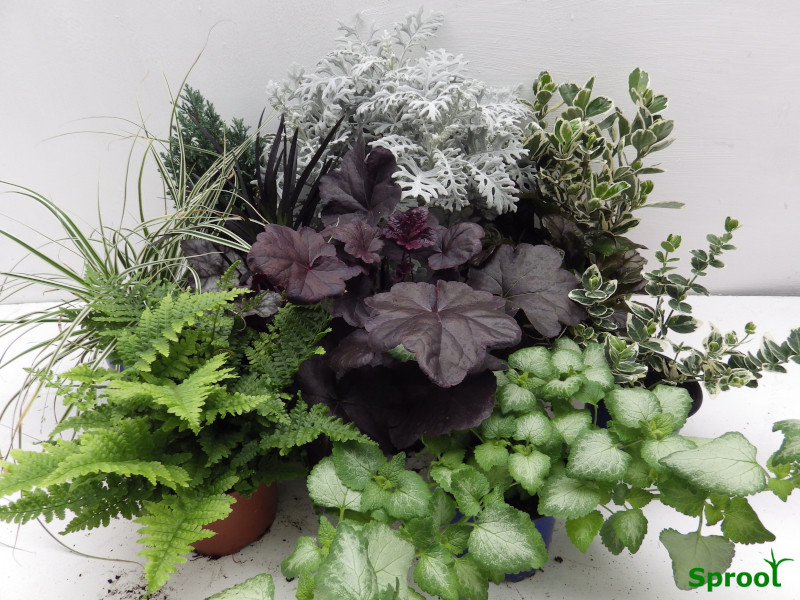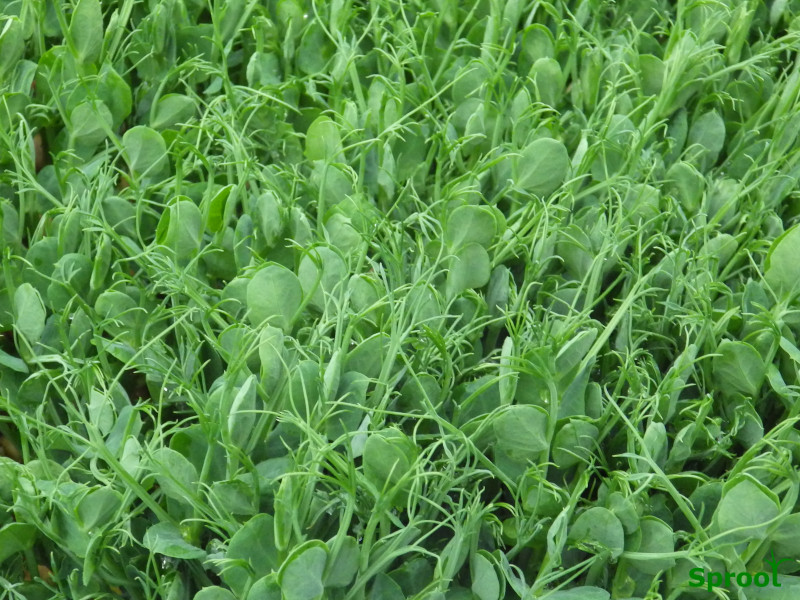Remember when Strawberries were Sweet, juicy and full of aroma.
They are not quite the same nowadays, the supermarket grower has to pick them slightly under ripe to minimise wastage, they are delivered using chilled transport this also reduces the taste.
To make things more difficult modern varieties can turn red before they are fully ripe so they look attractive but can taste a bit wooden.
To have perfectly ripe strawberries you need to grow your own or visit a pick your own strawberry farm.
The good news is its really easy to grow your own fresh strawberries and you don’t need a garden.
There are two types of strawberry’s main-crop and perpetual
Main-crop
These flower once a year producing one big crop, you can buy early mid and late varieties. If you grow some of each they will produce fruit for about 6 weeks during late June and July.
You need to provide some frost protection when the flowers are open during late April and May or you might get no fruit
Perpetual or ever-bearer types
These flower all the time producing a steady supply of fruit but not in large quantities, however over the whole season about the same as the main-crop.
They fruit earlier than main crop the first fruit can be as early as late May early June and they will fruit well into the autumn, with a bit of protection.
The easiest strawberry to grow for beginners are the perpetual types, they flower all the time, an early frost is not disastrous as more flowers will appear later.
Buying Strawberry plants
Make sure you buy certified stock it will have been checked and tested before it is lifted and sold.
Runners
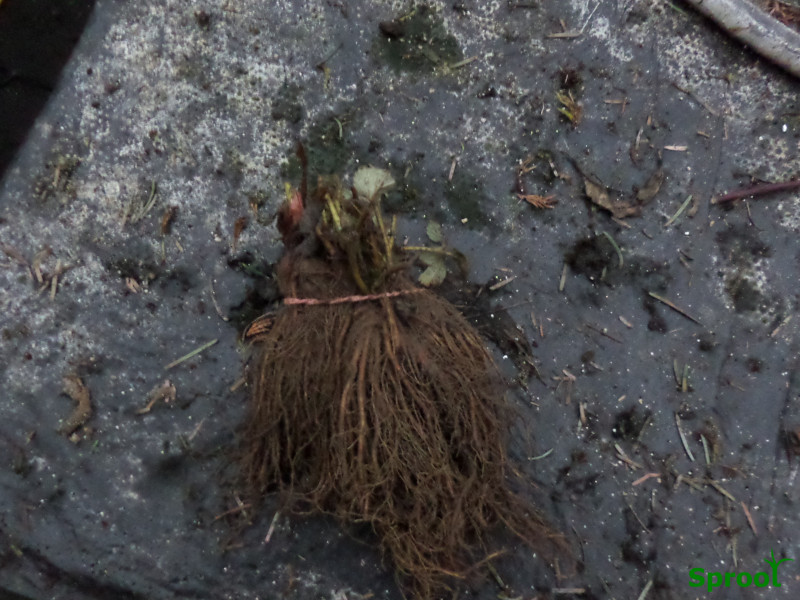
Supplied as a bare root plant often bunched together, you will receive what looks like a bundle of roots.
All the commercial strawberry growers use runners (small plants taken from stock plants) they are graded for size and stored in cold stores.
They are used by the mail order and on-line sellers and will be perfectly okay to order, as long as you are ready for them when they are delivered, you should have no problem
Know what size you are buying!
The commercial grower buys a large runner, A or A plus size this guarantees that the plant contains flower buds, ready to develop flowers and fruit in the first year after planting.
A+ Grade Strawberry Plants
These A+ grade plants can produce yields of up to 50% more during their first fruiting year! only plants with a 15mm+ crown diameter fall into this grade. They have very well developed root systems and on average, will go on to produce 3-4 trusses per plant which in turn will help to generate more flowers and more fruit – 400g+ of delicious berries per plant!
A+ Grade Plants kept in a cold store and planted later in better weather often produce fruit within 50 – 60 days of planting
A Grade Plants
Graded by crown size from traditional runner beds. The precise crown diameter used during grading will vary from variety to variety and from year to year but under favorable establishment conditions, you can expect to see some flower and fruit in the first year. With fewer flowers than A+ plants, A grades are easier to establish and suitable for planting in soil any time from February to June and also for planters and hanging baskets.
A- Grade
Ideal for planting in the soil or planters they are a low cost smaller plant but they should be grown for a full summer before you allow them to have fruit, if they produce any flowers in the first year resist the temptation of some early fruit, they will weaken the plant, take them off and have a better crop next year.
Just make sure you know what size of strawberry you are buying, if they are a bargain you might get a smaller grade plant with no flowers.
When the bare root plants arrive
They should always be planted out or potted on within twenty-four hours of receipt and thoroughly watered in. If for any reason this is not possible, they may be kept wrapped in polythene for a few days in an fridge not freezer.
If you have bought cold stored runners they could still be frozen when you get them this is completely normal.
Do not let the roots dry out, the roots could be dipped in water if they look dry, when they arrive.
If the roots are too long, they can be shortened in length (leave at least 4 in), using a knife or pair of scissors. don’t bend them into the pot leaving the ends sticking out.
It is important that the strawberry runners are planted at the correct depth the base of the crown (base of the leaves) should at soil level
Potted plants
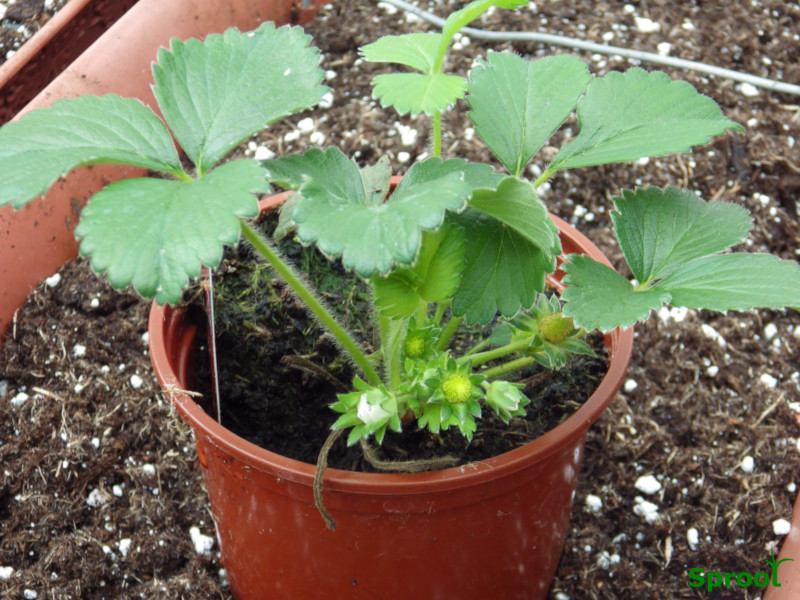
These are usually runners potted up early January and offered for sale through the spring, just check that the roots fill the pot.
There are also seed raised strawberries available and although the names are unfamiliar they produce good quality strawberries and most are perpetual types
Misted tip plants are often sold, these are the tips of the runners rooted into plug trays and are a good choice for planting in late spring or summer.
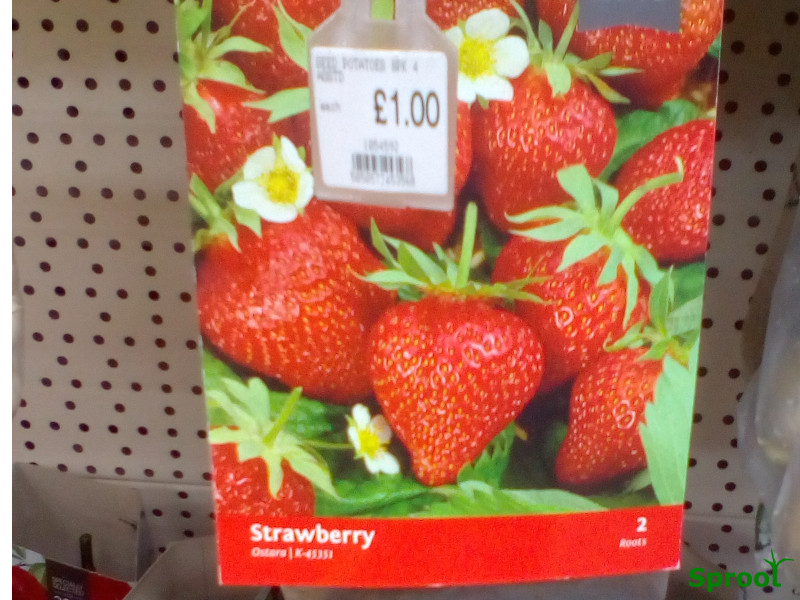
Avoid prepacked strawberries, they will have dried out and can’t be revived.
Need help choosing a variety? click below
Where to plant them.
Commercial strawberry growers are beginning to move away from the traditional practice of planting directly into the open ground over to what is termed ‘table-top’ growing. This method involves planting directly into containers or bags of compost which are supported about 90cm (3ft) off the ground (table-top height). Its great advantages are that cropping is much heavier, picking is a lot easier because there is no bending down, the fruit cannot be splashed with mud and there will be much less trouble (if any) from slugs, vine weevils, soil-borne diseases and weeds, so why not copy them by using planters and hanging baskets
This is gardening for beginners so plant your strawberries in pots, troughs or hanging baskets.
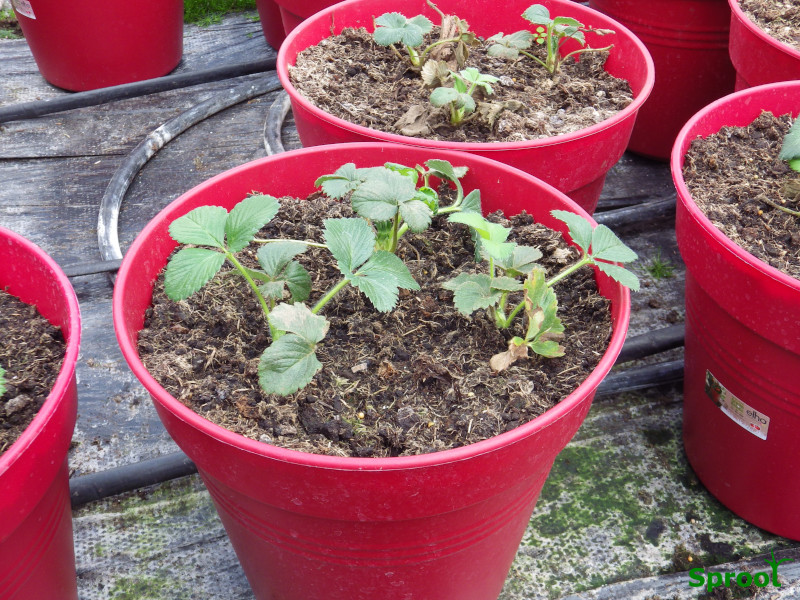
30 cm
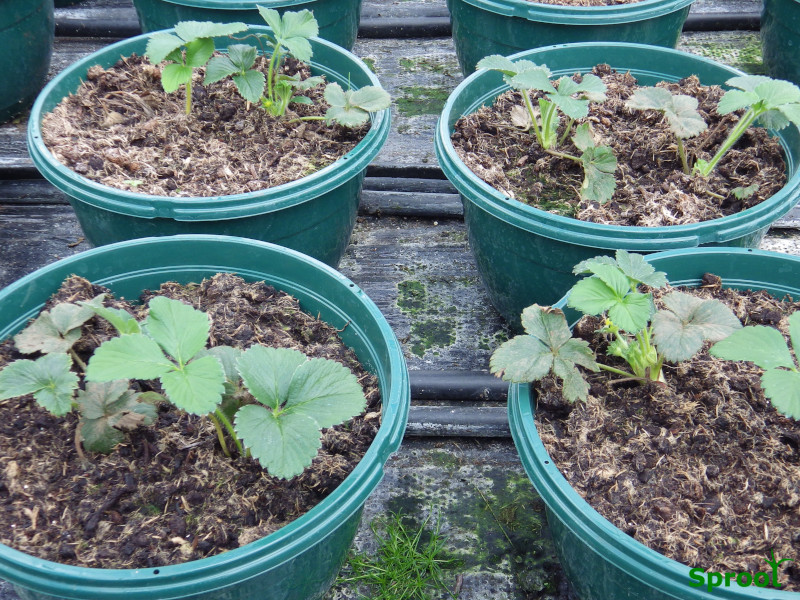
27 cm hanging basket
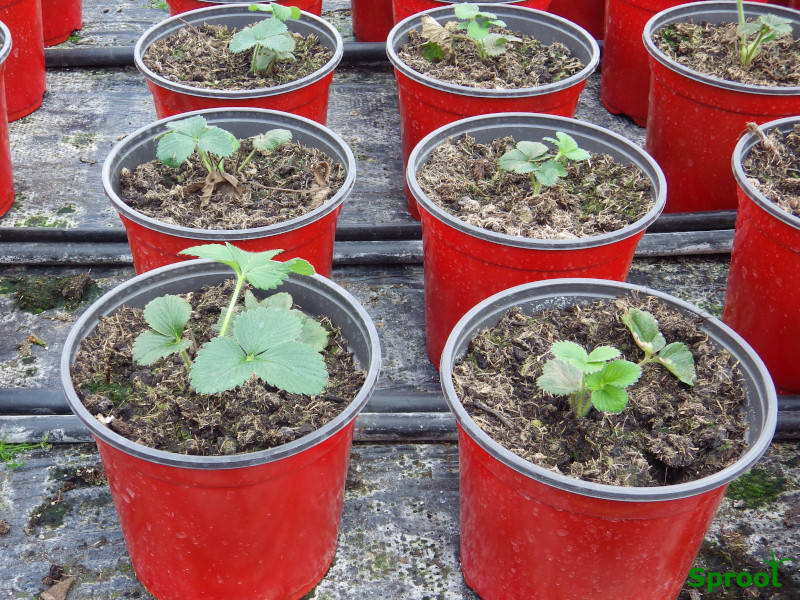
19 cm pot
Strawberries can be planted in any containers, I would suggest 3 plants in a 30 cm, 2 or 3 in a hanging basket or just 1 in a 19 cm pot.
There are 3 reasons
- 1 You will be able to move your plants about.
When they start growing, you can keep them warmer ( cold greenhouse grow house or even your house) it will produce early flowers and early strawberries. You need to protect the flowers from frost so if they are in a container this will be easier. - 2 Strawberry plants have a fine fibrous root system and hate having wet feet, a waterlogged soil will quickly kill your plants. In a container we can protect them from excessive rain by covering or moving them during the winter.
- 3 The strawberry fruit tend to hang down and if planted in the soil the fruit can be splashed with mud or touch the soil. In a container we can raised the fruit off the ground. This also makes it easier to protect your strawberries from the birds with some net.
- 4 vine weevil love strawberries raising them off the ground can reduce the risk, you can also have a fresh start by replanting every 2-3 years with fresh compost.
Sunshine is vital
Strawberries need the sun and won’t grow well in the shade.
Compost
Commercial strawberry growers use purposed made composts, designed to provide good drainage, they can be peat based, wood fibre or coco fibre but they all contain lots of air pockets to keep the roots happy.
As a gardener you will only find normal retail compost, so you need to add some extra air, the easiest way to do this is to add perlite to your existing compost I would add 20-30% by volume this will improve the root system.
How to plant them.
Runners
They should always be planted out or potted on within twenty-four hours. If the roots are too long, they can be shortened (leave at least 4 in) in length, using a knife or pair of scissors. don’t bend them into the pot leaving the ends sticking out.
It is important that the strawberry runners are planted at the correct depth the base of the crown (base of the leaves) should at soil level
Potted plants.
Easier to pot just make sure the base of the crown (base of the leaves) is level with the compost.
Careful watering is vital
Overwatering is the most common cause of failure of strawberry plants grown in containers.
No simple instructions can be given for watering because plants require very limited amounts of water when small, during cold weather or under dull conditions.
Frequent watering is required when temperatures are high, the sun is shining, the plants are large and the fruits are swelling.
Strawberry plants have a fine fibrous root system and for this reason will not survive for very long if they are allowed to grow in compost which is too wet or waterlogged.
In very wet weather especially during the winter you may need to move your planter under cover, to protect them from winter rain.
In very warm weather, water often but remember to feed all the time a tomato fertiliser is okay.
Growing your strawberries
If you are planting in the spring and summer your plants will slowly start to grow, new leaves will expand from the crown and if you bought A or A+ plants the flowers will quickly appear.
Now you need to be careful, when the flowers are open they can be damaged by frosts. A piece of fleece will keep 1 or 2 degrees of frost away, or you can just lift the planter into the house or green house for the night.
When the flowers are open they need to be pollinated, if they are outside insects will do this for you, so make sure you remove the fleece or move your planter outside during the day.
When the petals drop off, your strawberry fruit will start to form, now you need to be careful with the watering and feeding, keep them moist but don’t allow them to dry out and wilt or the fruit will suffer.
When the fruit start to ripen watch out for birds and slugs, both love strawberries and will happily take them before they ripen, have some netting handy or fleece can also work.
Unlike most fruits strawberries don’t continue to ripen after picking, you should leave them on the plant as long as possible for the full juicy aromatic strawberry experience.
Wet weather can cause the fruit to rot, with a planter you can move it undercover out of the rain to protect the fruit.
Runners
From June onward, runners will start appearing and a decision will have to be made whether to leave them or cut them off, they will sap the strength of the main plant and are best cut off. However with perpetual strawberries the runner should be allowed to grow, the first plant on the runner will flower immediately, leave it on, but cut the runner off beyond the first plant.
Strawberry aftercare
This is slightly different for perpetual or normal main crop.
‘Perpetual’ fruiting varieties are cultivated in the same way as standard varieties with two major exceptions. They produce fewer runners but any that are produced flower immediately and can be allowed to crop. The plants are not cut back in August but should be cut back in late autumn, this will also reduce the amount of powdery mildew from overwintering.
‘Perpetual’ fruiting strawberries are sometimes offered for sale as ‘climbing’, ‘elevated’ or ‘trellis’ strawberries.
Neither ‘perpetual’ or any other kind of strawberry is able to climb. If grown in this way,runners of ‘perpetual’ variety’s have to be trained and tied to a specially erected framework. This is not successful because the parent plant does not have a root system sufficiently large to support its own fruit as well as that of the rootless runners. It is better to allow the first runners to flower and hang over the edge of your planter.
Trimming the foliage helps prevent disease and helps develop the flowers.
Maincrop strawberries are best cut back in August when all the fruit are finished, this produces nice new leaves that help the crown and next years flowers to develop.
Perpetual trim October it helps prevent mildew overwintering
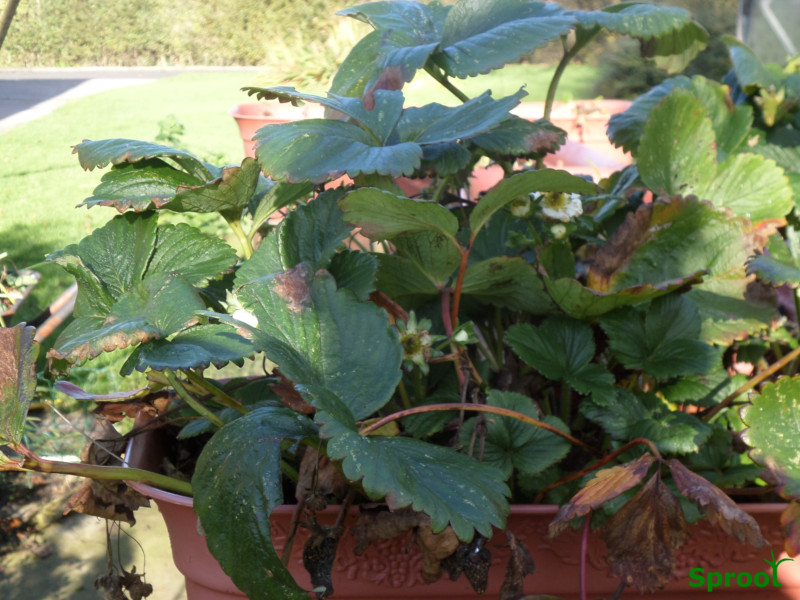
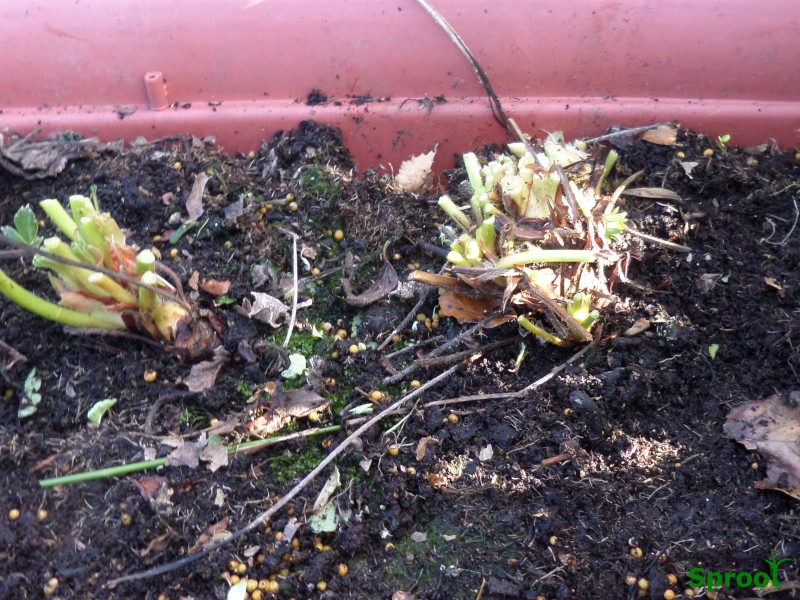
To cut back your strawberries take off all the old leaves, runners and flower stems
Checklist
- Strawberry plants, they can be bareroot (Jan-July) or potted plant (all year round) Buy big plants, they will flower in the first year.
- 30cm pots or hanging baskets make sure they hold 10 or more litres of compost.
- Slow-release fertiliser not essential but it will make feeding the plant easier
- Birds will come visiting, you will need some netting to keep them away.
- have some fleece handy to protect the flowers from early frosts
- Buy some tomato fertiliser when you see it on offer and a watering can to apply the feed.
- Scissors or pruners to cut the runners and old leaves off

